

The truth about consumer decisions and how to influence them
The truth about consumer decisions and how to influence them

This header image visualizes the complex, non-linear path consumers take when making a decision in the modern digital landscape.
It’s no secret the internet has changed how consumers make decisions. With all the information available online, 81% of buyers research a product before buying. For large purchases, consumers spend an average of 79 days in what Google refers to as “the messy middle”.
Over the years many have created models representative of the decision-making process. Not surprising, as influencing decisions is essentially the holy grail of marketing. In 1898, Elmo Lewis first introduced the AIDA model which formed the basis for the marketing funnel concept. A model still widely used today.
Google’s insights program “Think with Google” decided to build upon previous findings and see how online research and cognitive bias impacts decision-making. We’ll also go into how you can use these biases to eliminate churn and improve app engagement.
Here’s what we’ll go over!
- Uncovering the messy middle
- How do cognitive biases shape decision-making?
- Here’s how marketers succeed in the messy middle!
- How app gamification closes the gap between trigger and purchase
Uncovering the messy middle
The messy middle is a metaphor for the continuous loop between exploration and evaluation between a trigger of intent and the actual purchase. It refers to how consumers of the 21st century deal with abundant information and virtually unlimited choice.

This diagram from Google illustrates the 'messy middle,' a loop of exploration and evaluation that occurs between a trigger and the final purchase.
You could compare it to walking through an endless shopping street until one of the boutiques draws your attention. The eye-catcher here stands for the trigger, which turns a consumer from a passive state into an active one. This could be something as simple as a notification to set the entire loop in action.
To understand what happens in the “messy middle” it’s indispensable that you understand the two different cognitive states consumers shift between:
#1 Exploration
In the exploration phase, your mind works expansively. Shoppers absorb as much relevant information about the brand, or product to add to their “consideration sets”.
#2 Evaluation
The evaluation phase, however, is opposite to the exploration stadium. Here your mind works reductively. Based on a range of cognitive biases, consumers eliminate options from their consideration sets until they’re left with a final buying decision.
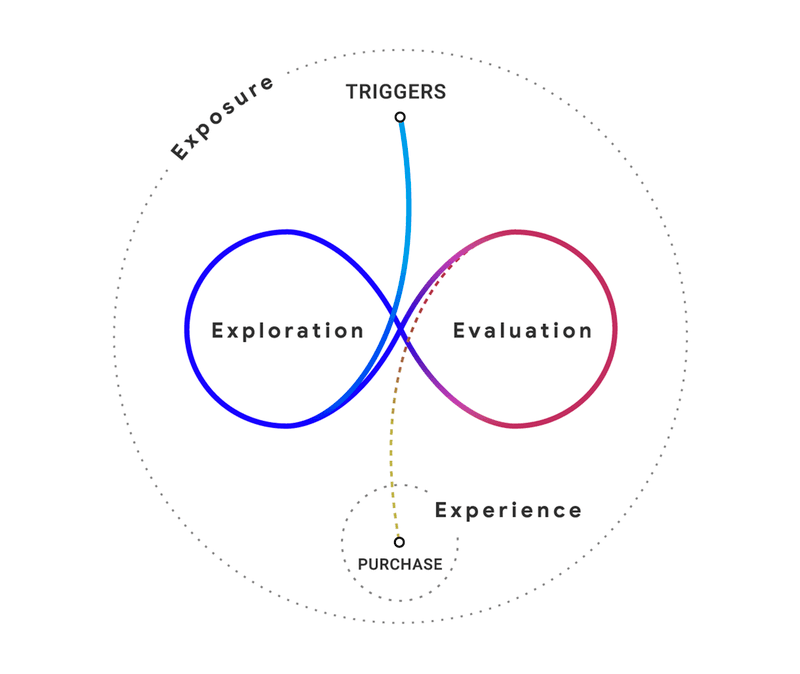
The process begins with a trigger that pushes a consumer from a passive to an active state, initiating their journey through the messy middle.
While advisory company McKinsey’s model for decision-making (the original model Google builds upon), refers to these two stages as one “active evaluation” phase, the two stages are cognitively distinct with different reward systems and thus require distinct approaches. There’s a subtle but important difference between giving a customer information or actively seeking to close the sale.
How do cognitive biases shape decision-making?
Cognitive biases shape shopping behavior and influence our preferences for one brand over the other.
#1 Category heuristics
These are shortcuts or rules of thumb that help us simplify the decision-making process to reduced mental effort. An example would be simply focusing on the amount of data included in a mobile phone contract.
#2 The power of NOW
It’s in our nature to live in the present. Especially in the 21st century, we expect to get our expectations fulfilled immediately. This cognitive bias obviously explains the success of instant downloads or 24-hour delivery.
#3 Social proof
What do people do when they’re uncertain about what to do? They follow the crowd. Social proof is a powerful and well-known principle first coined by psychologist Robert Cialdini in his 6 principles of influence. In the 21st century, this goes beyond just word-of-mouth and also takes the form of online reviews, testimonials, and recommendations.
#4 Authority bias
Similar to our tendency to follow the crowd, people are inclined to trust and follow domain authorities or experts. We see this a lot in toothpaste commercials for example, where expert dentists endorse a specific brand.
#5 Scarcity
Another basic economic principle states that a limited resource is more desirable. Scarcity operates on our fear of missing out. It typically appears in one of three ways: time-limited, quantity limited, or access limited.
If you use Booking.com, you will probably come across a few limited access offers such as “only 3 rooms left”. The travel site employs scarcity to create urgency and fear of missing out.
#6 The effect of “FREE”
Whenever our mind sees or hears the word free, it starts to irrationally jump around as if you’ve just won the lottery. In Dan Ariely’s book “Predictably Irrational” he talks about an experiment in which people were given two options to choose from. The first one was a free $10 Amazon gift card, the other a $20 gift card that could be bought for just $7. Even if the value of the second card was of superior value, more people chose the $10 gift over the other.
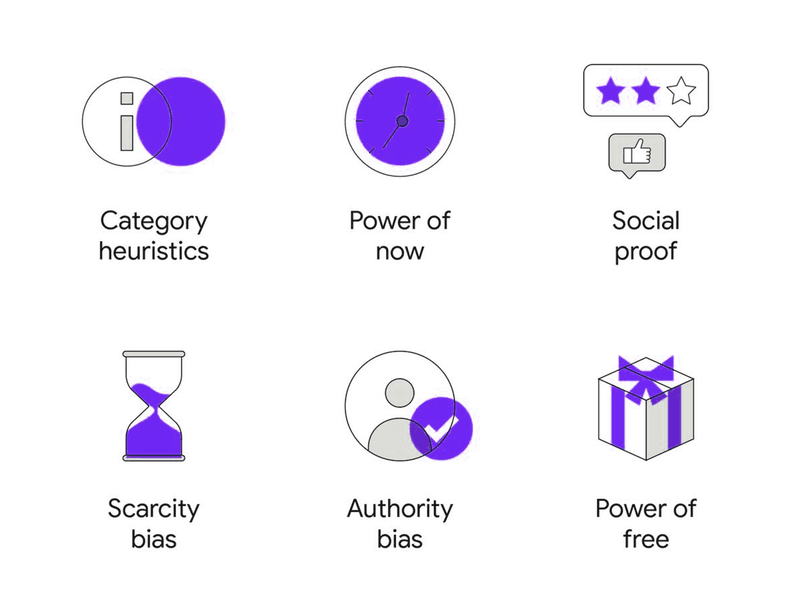
These icons represent the six key cognitive biases Google identified that significantly shape consumer shopping behavior and ultimate choices.
These six biases formed the basis for Google’s large-scale experiment involving 310,000 simulations of purchase scenarios. They carried out this research across a variety of consumer industries such as financial services, retail, travel, utilities, and consumer goods.
To test their hypothesis, they applied biases to see how they influenced consumer preference. The results were mind-blowing. When all biases were “supercharged” preference increased with a minimum of 28% for a fictional cereal brand, all the way up to 87% for major purchases like car insurance.
Here’s how marketers succeed in the messy middle!
While the messy middle might seem like a complicated, spaghetti-like pattern it’s important to know that for consumers it just feels like shopping. Your goal shouldn’t be to force people out of the loop but rather to give them a simple, satisfying experience.
Easier said than done, right? Luckily, Google gives away a four-step approach to help you succeed whether you’re a category giant or a challenger brand:
- Ensure brand presence so you are always at top of mind when consumers explore.
- Apply behavioral science principles to make your proposition more compelling.
- Close the gap between trigger and purchase so customers are less exposed to competitors.
- Work cross-functionally to avoid gaps in the customer experience that cause churn.
One method we like to advocate to break through the messy middle is gamification. By using game elements, you apply behavioral science principles to improve customer engagement, reduce banner blindness, and boost brand awareness.
Leveraging a consumer app can help you to break through the endless cycle between exploration and evaluation. Gamification Guru, Gabe Zicherman, states gamification is 75% psychology and 25% technology. Rewarding users with special features can increase customer interactions by up to 40% and will make conversion rates skyrocket.

This banner serves as a clear call to action, inviting readers to see how these psychological principles can be applied directly to their own applications.
How app gamification closes the gap between trigger & purchase
Gamification is the use of game-like elements in a non-game context. It does not mean you should create a game in itself, however you leverage what makes a game experience so fun to optimize app engagement. After all, games are some of the most viral apps in the world.
A great gamified app does three things, really well:
#1 Leverages data to understand which cognitive state a shopper is in
Saying the right things, at the right time, to the right person seems like an impossible task. Fortunately, data makes it possible to personalize experiences at scale. A great gamified platform learns more about the users with every interaction they make. The collected data is used to provide a better experience for every individual while ensuring app engagement.
StriveCloud’s Gamification Software easily plugs into your CRM to find gamification opportunities. Along with the behavioral designers at StriveCloud, you can boost app engagement and retention in no time, without having to hire an expensive product studio.
#2 Sets clear goals and sends triggers to improve app engagement and guide the consumer journey forward
A gamified experience is pushed forward by clear goals and milestones to complete. When completing a certain action, users are rewarded for their achievements and stay engaged longer. Usually, this process is put into action by a trigger, which is something like a notification to start the entire experience.
#3 Motivates and rewards behaviors that support business goals
It’s important to keep users engaged by rewarding them for carrying out actions that support your business goals. To ensure app engagement over the long run, however, rewards alone won’t do.
You’ll need to play on intrinsic motivators such as the human desire to achieve milestones or to progress. Bringing in gamification elements like leaderboards or badges into your app, not only keeps users engaged longer, it also makes your reward program more scalable. As you won’t have to invest endless amounts into rewards to keep users engaged.
Here’s how Starbucks turns app engagement into revenue
Starbucks first created a gamified loyalty program in 2015 to encourage customers to shop more, as well as to shop exclusively with Starbucks. Customers were able to pay through the app and get rewarded with a gold star every time they pay for their coffee.
With over 16 million members, the app has grown by over 25% in the last two years. According to a survey by the technology data company Manifest, the Starbucks loyalty program has the highest app engagement (48%) making up for 40% of sales in their US stores.
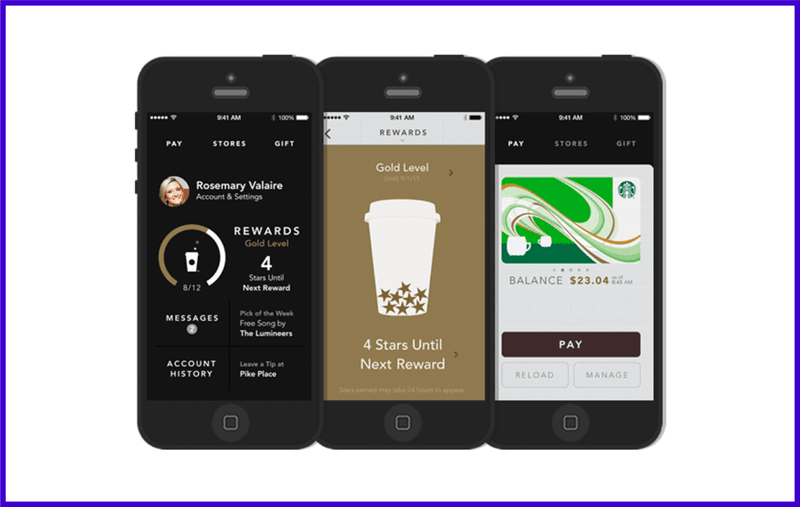
Starbucks' mobile app is a prime example of gamification, using a star-based rewards system to drive engagement and repeat purchases.
Starbucks’ app allows customers to collect stars and redeem them for rewards on different levels. You start at the Welcome level below 60 stars, grow into the green level, and eventually achieve gold status.
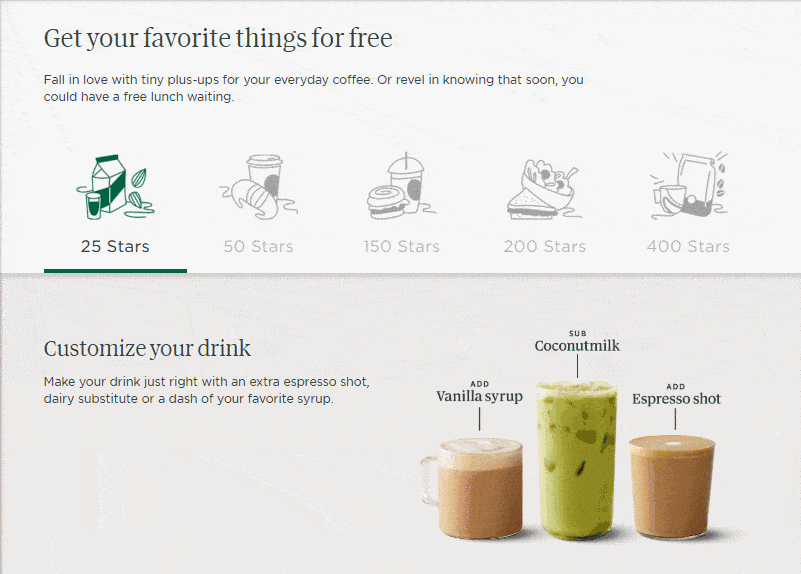
This animation demonstrates the tiered reward system within the Starbucks app, showing how users can progress through different levels to unlock better rewards.
Their loyalty app is fueled by a strong gamification strategy that supports their business goals.
The app:
- Incentivizes purchases
- Encourages loyalty and repeat purchases
- Makes personalized recommendations
A strong gamification strategy fueled by exclusive customized offers has helped the brand stay top of mind for customers.
Want to find out what other motivators fuel app engagement? Check out our expanded Gamification resource guide!
In a rush? Get up to speed here
Google’s insight institute “Think With Google” investigated the consumer's decision-making process between the trigger of intent and the actual purchase. They refer to this process as “the messy middle”.
The messy middle is a constant loop between exploration and evaluation, until a consumer exits by making a buying decision. To research what influences cognitive biases have in this process Think with Google ran over 310,000 purchase simulations.
They focused on six cognitive biases: category heuristics, social proof, scarcity, authority bias as well as the power of “NOW” and “FREE”. The results were astonishing. With all six biases supercharged, brand preference changed with a minimum of 28% all the way up to 87% for major purposes like car insurance.
To succeed in the messy middle you have to maintain a brand presence, apply behavioral science, and close the gap between trigger and purchase. Gamification makes the customer experience flow by motivating and rewarding the desired target group behaviors.
Tangled up in the messy middle? Book a consultation and we’ll help you push the experience forward!

This final call to action prompts readers who feel overwhelmed by the 'messy middle' to seek expert help in streamlining their customer experience.
Related Posts
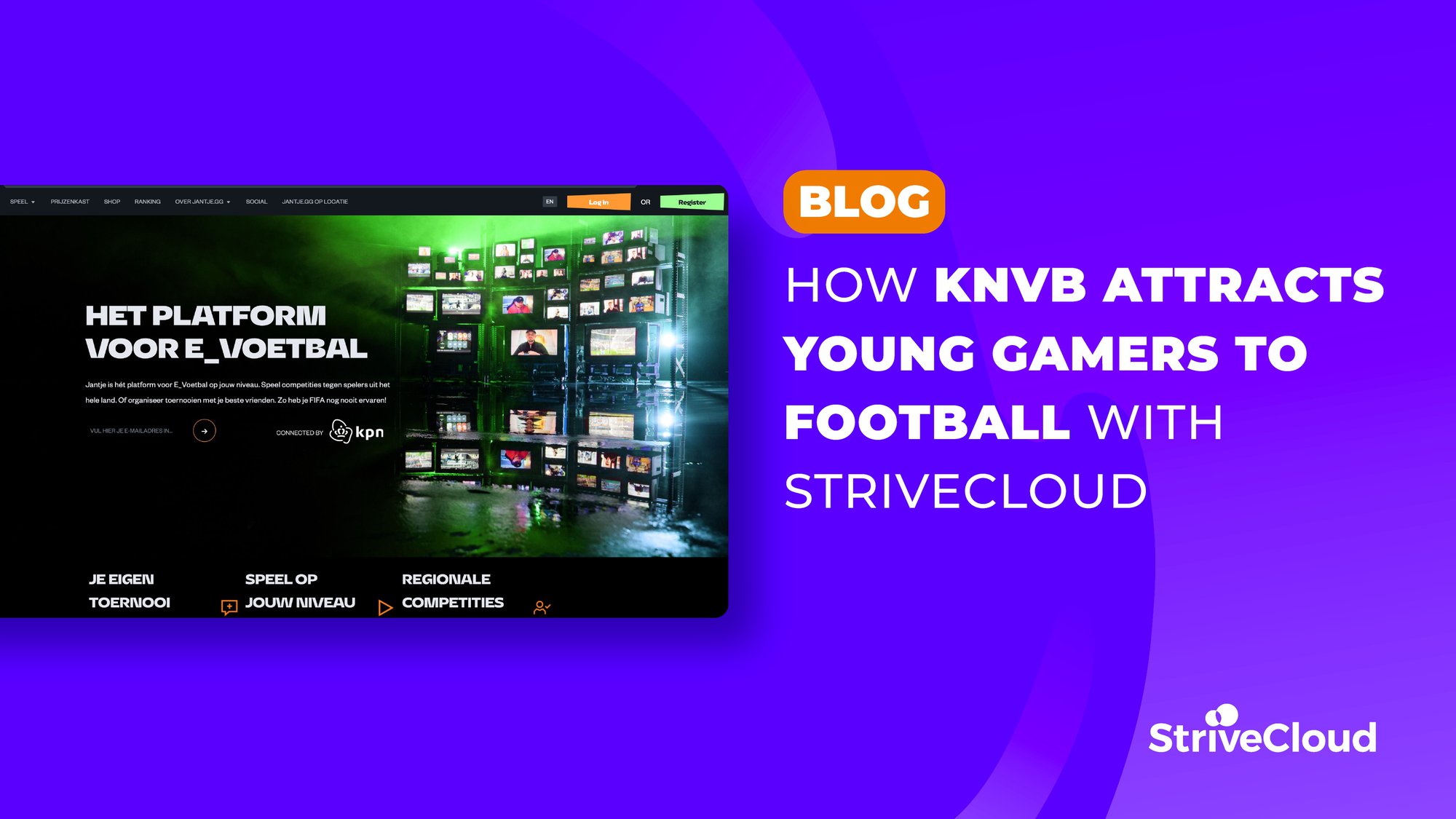
How KNVB attracts young gamers to football using the tournament platform from StriveCloud
The rise of esports gives sports organizations a huge opportunity to attract new fans and build an online audience. With the right tournament tool, you can set up your very own gaming community! And that's exactly what KNVB did with Jantje.gg. Here's how they built an esports platform to engage fans & bring them closer to the club!
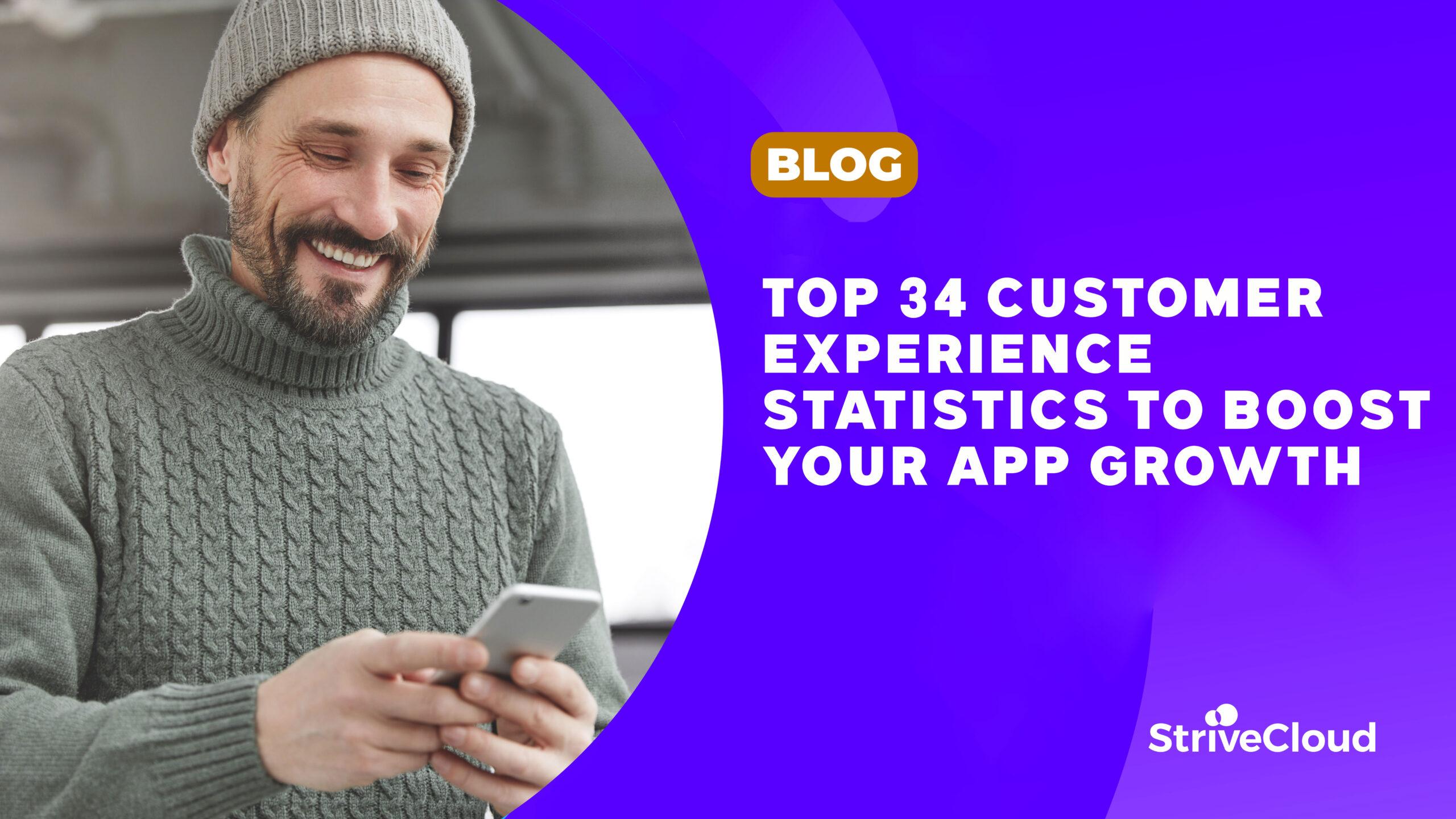
Top 34 customer experience statistics to boost your app growth
46% of businesses say that customer experience is their most important priority in the next 5 years. To be sure, improving your CX is a solid route to growth for apps, and here are 34 statistics that can guide your journey in optimizing your CX in 2022.

